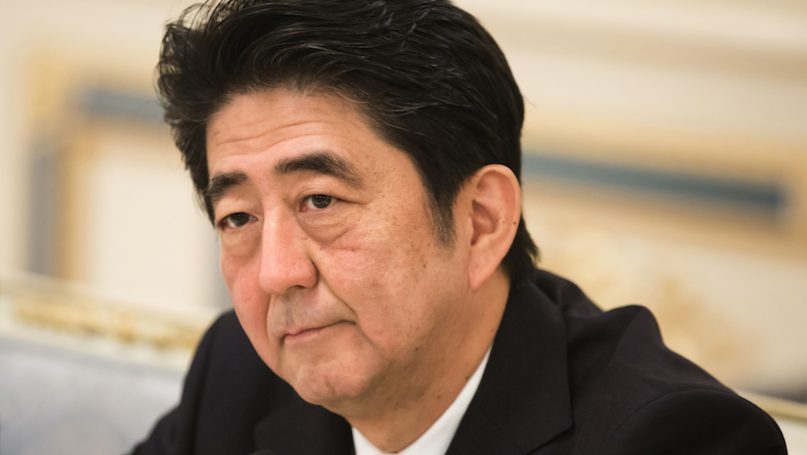
The murder on 8 July 2022 of former Japanese Prime Minister Shinzo Abe while campaigning for upcoming elections in the historic city of Nara, shocks both Japan and the world at large. Doctors fought to save Mr Abe’s life, but despite a few moments of consciousness after the shooting, the former PM was described as being continuously comatose during desperate efforts of medical resuscitation. Responding to this apparent act of political violence, PM Fumio Kishida condemned the attack, saying: “It is barbaric…and it cannot be tolerated.” The Fire and Disaster Management Agency had earlier confirmed that Mr Abe had a bullet wound on the right of his neck, and also suffered subcutaneous bleeding under the left part of his chest. Mr Abe was said to be responsive in the minutes after the attack, but the 67-year-old’s situation later deteriorated. Eyewitnesses saw a man firing twice at Mr Abe from behind. Security officers detained the attacker, who made no attempt to run, and seized his weapon – reportedly a handmade gun.
The suspect has been identified as Nara resident Tetsuya Yamagami. Local media reports say he is believed to be a former member of Japan’s Maritime Self-Defense Forces, and that it was an improvised firearm. Explosives have subsequently been found at the suspect’s home. On Japanese social media, the hashtag, “We want democracy, not violence” was trending, with many social media users expressing their disgust towards the incident.
Politically hawkish, Shinzo Abe favoured revision of Japan’s pacifist constitution, and honoured the Yasukuni Shrine, itself controversial primarily because its Book of Souls contains the names of more than a thousand war criminals from WW2. Naturally, world leaders are stunned by Shinzo Abe’s murder. Japan’s own Foreign Ministry and several prominent politicians in Japan and abroad warned of ‘attacks on supporters of democracy everywhere’. British PM Boris Johnston described his murder as “despicable”, while French President, Emmanuel Macron said it was “an atrocity”. Antony Blinken, US secretary of state, described the shooting as a “very, very sad moment”,” speaking from the G20 in Bali, Indonesia. Former US president Donald Trump called it “a tremendous blow to the wonderful people of Japan”. Japan’s fellow Quad members, Australia, India and the US, were among the first to respond after the shooting. China’s foreign ministry also expressed “shock” at Abe’s shooting and extended condolences to his family. Kevin Rudd, the former Australian PM, called it, “a sober reminder to all our democracies of how precious our freedoms are…. an attack on supporters of democracy everywhere.”
India’s PM Narendra Modi said he was, “deeply distressed”. Tsai Ing-wen, Taiwan president, condemned the “violent and illegal acts”. Abe’s public support for Taiwan had strengthened since he left office in the face of rising Chinese aggression against the democratic nation. Charles Michel, European Council president, said he was “shocked and saddened by the cowardly attack on Shinzo Abe… [The] EU stands with the people of Japan and [prime minister Fumio] Kishida in these difficult times.” Abe had previously outraged Chinese nationalists. A Weibo comment about the incident immediately went viral across the PRC: “Don’t forget that he visited the Yasukuni Shrine,” referring (above) to the controversial memorial that honours Japan’s war dead. Leif-Eric Easley said the shooting was a “major shock for Japanese politics and society…But Japan’s foreign policy will probably remain consistent, focused on strengthening the rules-based order with the USA and other international partners.” Anthony Albanese, Australia’s prime minister, observed, “our thoughts are with his family and the people of Japan at this time”.
In Japan, possession of firearms is restricted, and while political violence is not unheard of, Abe’s shooting revisits the memories of Japan’s Pre-World War II era. For example, PM Hirobumi Ito was killed in 1909—after he had left office—at a train station in Japanese-occupied northeast China. Indeed, Tokyo Station still bears an inscription near the site where another PM, Takashi Hara was fatally stabbed on Nov. 4, 1921. Japan’s political violence intensified during the 1930s as ultra-rightists sought to destroy the multiparty constitutional government. For example, an attempted coup on February 26, 1936, assassinated finance minister, Korekiyo Takahashi, and others, wounded the PM, and almost overwhelmed legitimate democratic government. The coup was quashed, but at the expense of growing military influence over the government.
Post WW2, as Japan metamorphosed into a democracy, political violence lessened, but even so there were still outbreaks of riots and assassinations. In 1960 Otoya Yamaguchi stabbed to death Mr Inejiro Asanuma, leader of the Japanese Opposition Socialist movement. In 2007, Nagasaki’s Mayor, Iccho Ito, a fervent opponent of nuclear weapons, was shot dead by a right-wing group. Prior to this was the stabbing to death of Koki Ishii, an outspoken member of the opposition Democratic Party of Japan. These events show that Japan does to an extent possess a submerged history of political violence, uncannily in a country known for its post-WW2 pacifism and high level of public safety. Japanese citizens will surely question the fragility of their democracy as Abe will be laid to rest in public ceremonies.
Further Reading on E-International Relations
- The Incremental Revolutionary: Japan after 8 Years of Shinzo Abe
- Opinion – Shinzō Abe and Russo-Japanese Relations
- Opinion – The US-Japan Alliance Continues to Stand for Democracy, Despite a Role Reversal
- Opinion – Japan-South Korea Relations: Breaking the Cycle?
- Opinion – Japan’s Military Awakening
- Opinion – Japan’s 3/11: Ten Years On